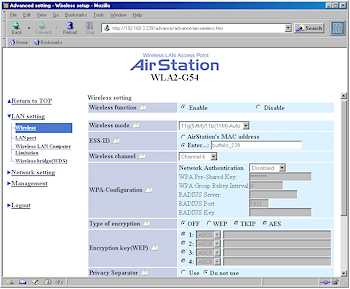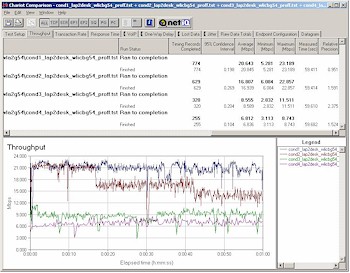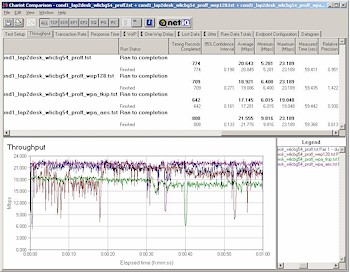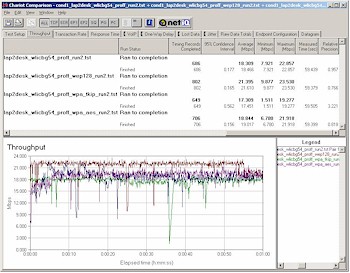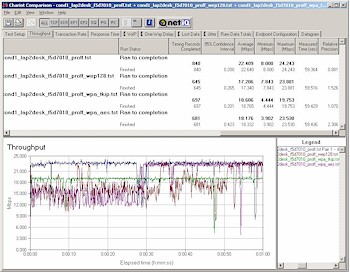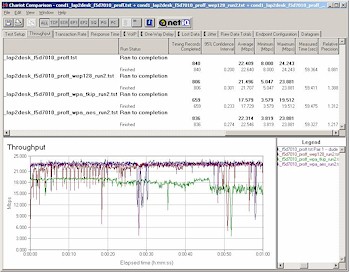Introduction
| BuffaloTech AirStation 54Mbps Wireless Compact Repeater Bridge-g | |
|---|---|
| Summary | – Broadcom-based mini-AP that includes WDS-based wireless bridging and repeating – Replaced by WLA-G54C |
| Update | 10/15/2003 – Added reference to WLA-G54C |
| Pros | • 11g spec compliant, WPA, and WDS repeating / bridging • Very compact size |
| Cons | • Can’t attach external antenna • Cable weight and inflexibility can overpower its compact size and light weight |
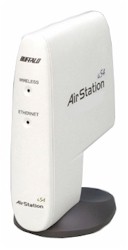
Buffalo Tech’s AirStation 54Mbps Wireless Compact Repeater Bridge-g is actually a full-featured 802.11g access point that supports WDS-based wireless bridging and repeating. It comes in an extremely small and light package that’s about the size of your average PocketPC or Palm PDA, and is meant to stand vertically when slipped into the small plastic base that comes with the product.
Although its tiny size should keep your spouse or significant other’s objections about its addition to your home’s decor to a minimum, I would like to see BuffaloTech add screw mounting features to the base. This would make wall mounting easier and allow it to be tacked down to a desktop so that the weight of its own power and Ethernet cables doesn’t cause it to topple over – as it did a few times during my testing.
The WLA2 uses Broadcom’s BCM4702 Wireless Network Processor which is the same as used in Buffalo Tech’s WBRG54 router and Linksys WAP54G and WRT54G AP and routers. The mini-PCI radio is marked as a Buffalo Tech WLI-MPCI-G54, but the WLA2’s FCC ID says the radio is essentially a copy of Broadcom’s mini-PCI reference design.
There are actually two diversity antennas inside the WLA2’s teeny case, one fastened vertically to the front panel, the other horizontally mounted along the bottom of the upper case (right above the connectors). Unfortunately, neither can be replaced with an higher-gain external antenna, which I found puzzling given the WLA2’s bridging and built-in Power-Over-Ethernet (POE) capabilities.
Setup and Admin
Admin is via a browser-based interface that you can access at the factory default address of 192.168.11.1. I bypassed the too-simple “top” screen by clicking the Advanced button on it that took me to the Wireless setting screen shown in Figure 1.
Figure 1: Wireless settings screen
(click on the image for a full-sized view)
As you can see, the WLA2 supports WEP, WPA, and WPA-PSK, and adheres to Broadcom’s implementation that makes AES encryption also available when using either WPA mode.MAC address association control (Wireless LAN Computer Limitation) is supported, but only in an “Allow” mode and no ability to save / load a list of MAC addresses.
There are other interesting settings to explore, but two notable omissions are the inability to set the transmit speed and disable (E)SSID broadcast.
As is unfortunately typical of BuffaloTech products, however, the interface is somewhat confusing and you’ll puzzle over some of the selections, even after clicking on the handy help balloon icons and reading the on-line help they summon. Buffalo is working on improving the user interfaces across their product line, but the fruits of their labors are slow in coming.
Monitoring features are an interesting mix. You get transmit / receive packet info for wired, wireless, and even each WDS bridged network ports, and logging of many system events to both the admin interface and syslog server. But an obvious omission is a simple list of connected clients, and client connect / disconnect events seem to be missing from the log, too.
I did check out the WDS-based repeater function using two WLA2s and it worked without a hitch. As with the recently tested Belkin F5D7130 AP, the WLA2 allowed me wireless access to the admin interfaces no matter what the mode, which was extremely handy. Don’t forget, though you’ll lose more than half the maximum throughput for each WDS “hop”, so you’ll only get around 8Mbps best case when connecting through a repeater.
Wireless Performance
Since the WLA2 is Broadcom-based and 11g compliant, I expected performance similar to the Belkin F5D7130. However my testing with a BuffaloTech WLI-CB-G54 CardBus card showed that Buffalo’s “throughput hopping” behavior is still present as shown in Figure 2.
Figure 2: Four location throughput
(click on the image for a full-sized view)
Further testing with a Belkin F5D7010 CardBus card – also 11g spec-compliant and WPA-enabled – showed that the “hopping” seems to be related to the client card and not the WLA2. A close-range Condition 1 test with the Belkin card showed a steady throughput plot – although not without a few significant throughput “dropouts” – with average throughput of 22.6Mbps compared to the 20.8Mbps average obtained using the Buffalo Tech card.
This doesn’t necessarily mean that the Belkin card was better. I ended up comparing Condition 1 throughput in three security modes – WEP 128, WPA-PSK / TKIP, and WPA-PSK / AES – for both cards and found odd behavior in each case. I was especially concerned at the drastic difference between two runs taken a few hours apart for both cards.
Wireless Performance, Continued
Although the throughput behavior in the various security modes seemed to improve for both the Belkin and Buffalo Tech cards, the differences were significant enough to not give me a comfortable feeling about the stability of either card’s performance. Judge for yourself by looking at Figures 3 – 6 below.
Figure 3: Security mode performance comparison
Buffalo Tech WLI-CB-G54 client – Run 1
(click on the image for a full-sized view)
Figure 4: Security mode performance comparison
Buffalo Tech WLI-CB-G54 client – Run 2
(click on the image for a full-sized view)
Figure 3 shows that in the first run, the combination of WLA2 and Buffalo Tech client produced reductions in average throughput of approximately 8% with WEP128, and 17% with WPA-PSK / TKIP. Average throughput actually increased with WPA-PSK / AES enabled by about 4%, mainly because this mode seemed to eliminate the throughput hopping effect seen in other modes.
The second run shown in Figure 4 produced throughput with less variation in each mode, and more like what I’d expect from previous testing of Broadcom-based products. The main puzzler was the increase in throughput with WEP128 enabled, but I think that’s more a function of the normal “hopping” behavior of the Buffalo Tech client.
Wireless Performance, Continued
Figure 5: Security mode performance comparison
Belkin F5D7010 client – Run 1
(click on the image for a full-sized view)
Figure 6: Security mode performance comparison
Belkin F5D7010 client – Run 2
(click on the image for a full-sized view)
When I switched over and ran the same tests with the Belkin card, the first run in Figure 5 shows the WEP128 and WPA-PSK / AES modes fared the worst with reductions in average throughput of 23% and 19% respectively, primarily caused by drops in throughput to under 16Mbps for at least half of each of the test runs. WPA-PSK / TKIP did a little better, turning in a 17% throughput hit, primarily due to a smoother throughput profile. The second Belkin card run, however, finally produced the behavior I’d expect, with significant throughput reduction (22%) only in the WPA-PSK / TKIP mode.
My conclusion? I suspect there’s still some tuning left to do in the WLA2’s code, which hopefully can make all clients – or at least all Broadcom-based clients – behave more like the Belkin card’s second run.
NOTES:
– Although Buffalo provides the selection of Auto (b/g), WiFi (11b-only), and Turbo (11g-only) modes, and the ability to disable 802.11b protection, I ran all the above tests in the WLA2’s defaults of Auto mode and 11b protection disabled.– The WLA2’s “Turbo” mode does not enable Broadcom’s throughput enhancement Xpress technology, but just prevents clients that don’t support the higher speed OFDM modes, i.e. 11b clients, from connecting.
802.11g Wireless Performance Test Results
| Test Conditions
– WEP encryption: DISABLED |
Firmware/Driver Versions
AP f/w: |
||||
|---|---|---|---|---|---|
| Test Description | SNR (dB) | Transfer Rate (Mbps) | Response Time (msec) | UDP stream | |
| Throughput (kbps) | Lost data (%) | ||||
| Client to AP – Condition 1 | 58 | 20.8 [No WEP] 18.9 [w/ WEP] |
1 (avg) 2 (max) |
499 | 0 |
| Client to AP – Condition 2 | 26 | 16.9 | 1 (avg) 2 (max) |
499 | 0 |
| Client to AP – Condition 3 | 13 | 8.6 | 1 (avg) 3 (max) |
499 | 0 |
| Client to AP – Condition 4 | 16 | 6.8 | 1 (avg) 3 (max) |
498 | 0 |
See details of how we test.
Closing thoughts
Buffalo Tech was kind enough to provide me with two pre-release WLA2-54G’s, so I hope that some of the performance issues I found will be addressed before the product hits the shelves in a few weeks.
What won’t be fixed, though, is its inability to connect to higher gain antennas. I think Buffalo Tech is missing the boat on this one, since with its small size and POE support, it could be put into a waterproof box and stuck to the back of a panel antenna for medium range applications or clamped to the mast of a yagi or parabolic for longer-range shots. Just think of the possibilities!
That said, I found the WLA2-G54 to have a lot of features packed into such a tiny package. I just hope Buffalo Tech does something with the name so that buyers in search of a very flexible 802.11b/g Access Point that also supports WDS-based bridging and repeating don’t pass it by!

